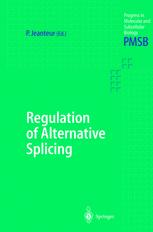

Most ebook files are in PDF format, so you can easily read them using various software such as Foxit Reader or directly on the Google Chrome browser.
Some ebook files are released by publishers in other formats such as .awz, .mobi, .epub, .fb2, etc. You may need to install specific software to read these formats on mobile/PC, such as Calibre.
Please read the tutorial at this link: https://ebookbell.com/faq
We offer FREE conversion to the popular formats you request; however, this may take some time. Therefore, right after payment, please email us, and we will try to provide the service as quickly as possible.
For some exceptional file formats or broken links (if any), please refrain from opening any disputes. Instead, email us first, and we will try to assist within a maximum of 6 hours.
EbookBell Team

5.0
88 reviewsThe generality and quantitative extent of alternative splicing have only now begun to be fully appreciated. The first draft of the complete human genome led to the surprisingly low figure of about 32,000 genes. The extensive use of alternative splicing and its consequences in terms of coding capacity could account for this discrepancy and help fill the complexity gap between the genome and the proteome. After a computer-based assessment of the frequency of alternative splicing, this book addresses mechanistic aspects followed by examples of its involvement in important cellular processes. Finally, it raises the possibility of artificial modulation of alternative splicing by antisense nucleotides.